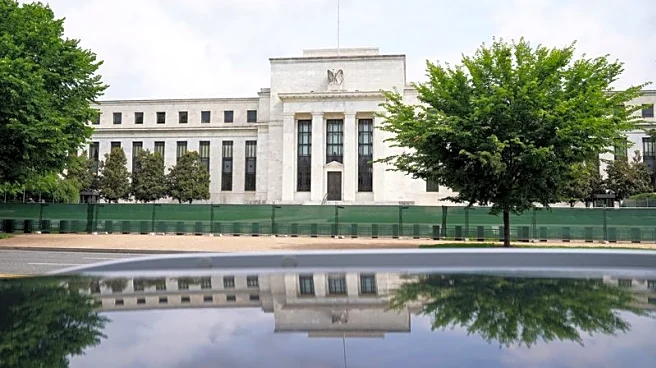What is the story about?
What's Happening?
The S&P 500 ETF (SPY) and Nasdaq 100 ETF (QQQ) closed positively despite a significant revision in job growth figures by the Bureau of Labor Statistics. The revision indicated a reduction of 911,000 jobs for the year ending March 2025, surpassing the expected 700,000 fewer jobs. This adjustment marks the largest percentage revision since 2009, raising concerns about the labor market's health. JPMorgan CEO Jamie Dimon expressed concerns about the economy's weakening, suggesting that the Federal Reserve might lower interest rates at the upcoming Federal Open Market Committee meeting. However, Dimon cautioned that such a move might not significantly impact the economy. Investors are wary that a rate cut could lead to a 'Sell the News' event, given the current macroeconomic data and market conditions.
Why It's Important?
The revision in job growth figures and Dimon's warning highlight potential vulnerabilities in the U.S. economy. A weakening labor market could signal broader economic challenges, affecting consumer confidence and spending. The possibility of a rate cut by the Federal Reserve is typically seen as beneficial for stocks, as it lowers borrowing costs and encourages investment. However, in the current context of high valuations and mixed economic signals, the anticipated rate cut might not provide the expected boost. This situation could lead to cautious investor behavior, impacting stock market dynamics and potentially slowing economic growth.
What's Next?
The Federal Reserve's decision at the September 16-17 meeting will be closely watched by investors and policymakers. A rate cut could influence market sentiment and economic activity, but its effectiveness remains uncertain. Stakeholders will also monitor further economic indicators to assess the labor market's trajectory and overall economic health. The Treasury Secretary's agreement with President Trump's view on interest rates adds another layer to the ongoing debate about monetary policy's role in supporting growth.
Beyond the Headlines
The record-breaking jobs revision and potential rate cut underscore the complexities of managing economic policy in uncertain times. The interplay between labor market data, interest rates, and investor sentiment reflects broader challenges in achieving sustainable economic growth. As policymakers navigate these issues, the long-term implications for fiscal and monetary strategies will be critical in shaping the U.S. economic landscape.
AI Generated Content
Do you find this article useful?















